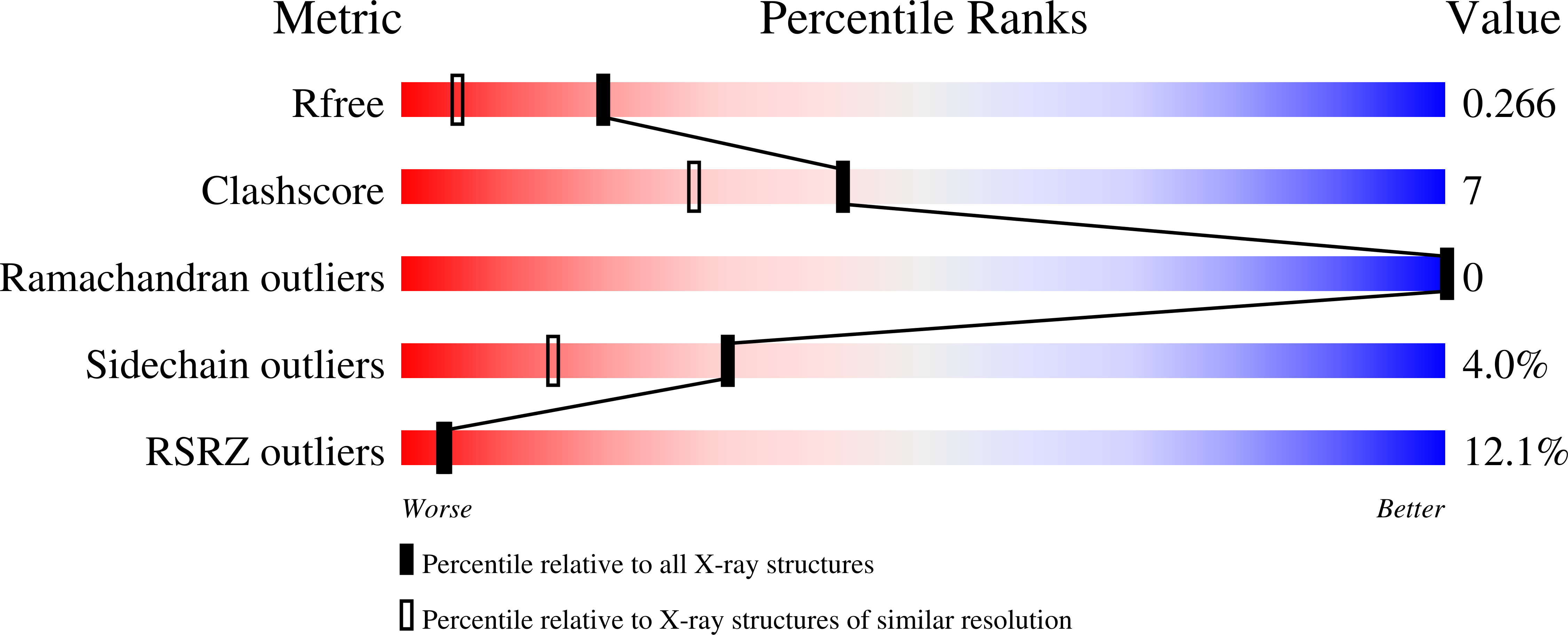Siglec-7 Undergoes a Major Conformational Change When Complexed with the {alpha}(2,8)-Disialylganglioside GT1b
Attrill, H., Imamura, A., Sharma, R.S., Kiso, M., Crocker, P.R., van Aalten, D.M.F.(2006) J Biol Chem 281: 32774-32783
- PubMed: 16895906
- DOI: https://doi.org/10.1074/jbc.M601714200
- Primary Citation of Related Structures:
2HRL - PubMed Abstract:
The siglecs are a group of mammalian sialic acid binding receptors expressed predominantly in the immune system. The CD33-related siglecs show complex recognition patterns for sialylated glycans. Siglec-7 shows a preference for alpha(2,8)-disialylated ligands and provides a structural template for studying the key interactions that drive this selectivity. We have co-crystallized Siglec-7 with a synthetic oligosaccharide corresponding to the alpha(2,8)-disialylated ganglioside GT1b. The crystal structure of the complex offers a first glimpse into how this important family of lectins binds the structurally diverse gangliosides. The structure reveals that the C-C' loop, a region implicated in previous studies as driving siglec specificity, undergoes a dramatic conformational shift, allowing it to interact with the underlying neutral glycan core of the ganglioside. The structural data in combination with mutagenesis studies show that binding of the ganglioside is driven by extensive hydrophobic contacts together with key polar interactions and that the binding site structure is complementary to preferred solution conformations of GT1b.
Organizational Affiliation:
Division of Biological Chemistry and Molecular Microbiology, School of Life Sciences, University of Dundee, Dundee DD1 5EH, Scotland, United Kingdom.

















